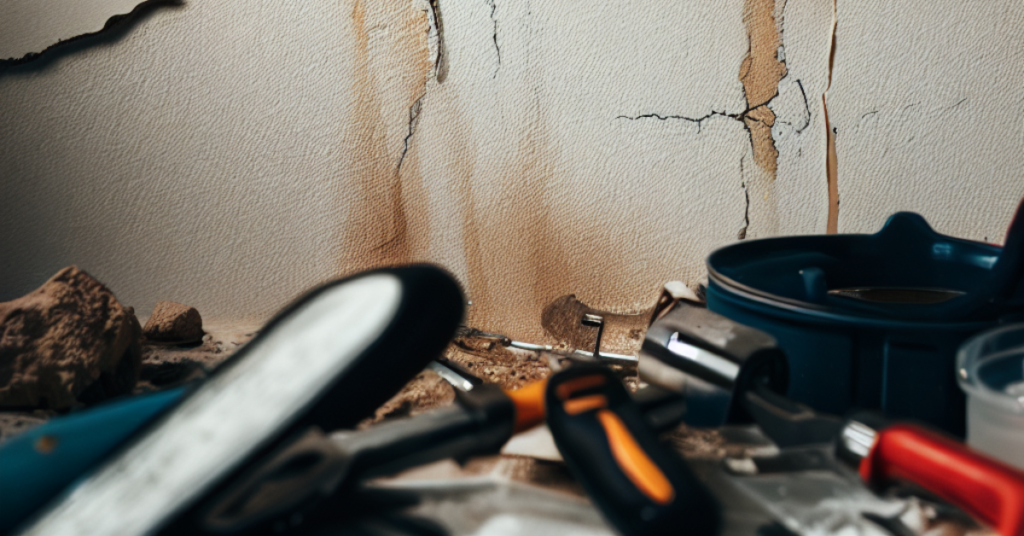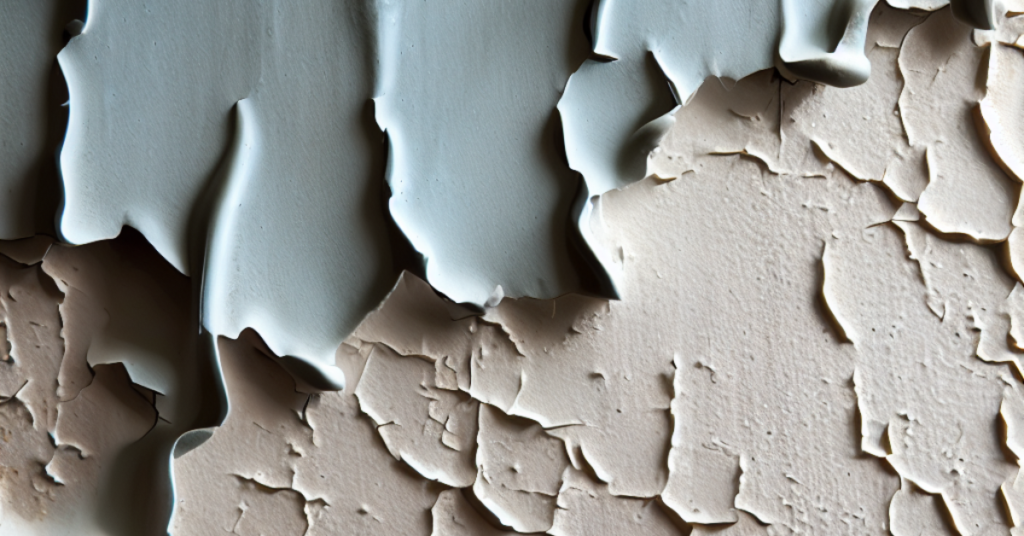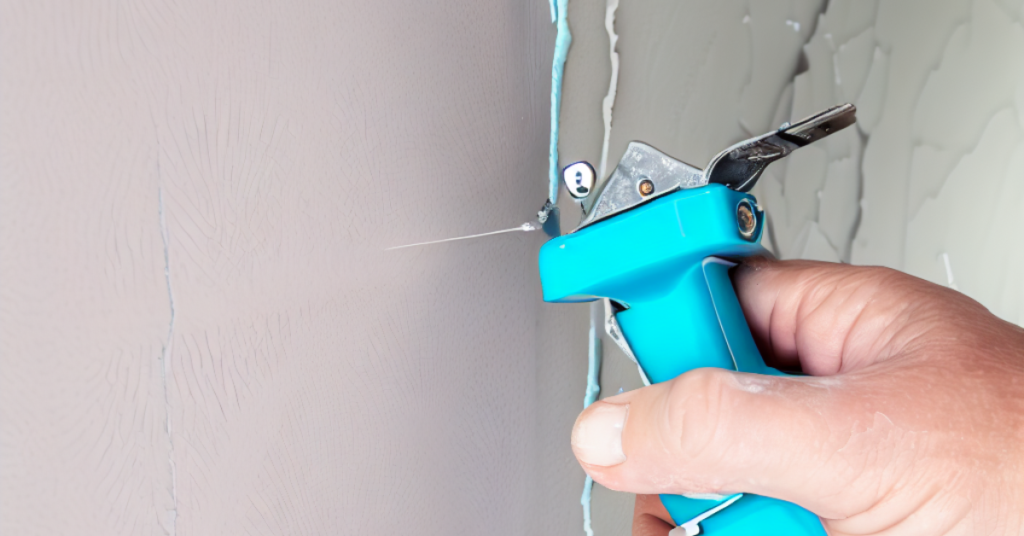
Do you dread the daunting destruction of water damage to drywall? Don’t despair! Proper prevention and preparation can protect your property from these costly consequences.
Learn how to identify signs of water damage, seal cracks and gaps in drywall, check for leaks in plumbing and roofs, and clean and maintain gutters and drainage for a safe shelter.
Join us as we explore ways to ward off water damage woes with wisdom.
Signs of Water Damage to Drywall

Signs of water damage to drywall include bubbling or softness, stains or discoloration, warped trim or weakened baseboards, a musty smell, and puddles of water. These can indicate that the drywall needs repair due to water damage.
The drywall is very vulnerable and needs to be examined regularly for signs of moisture intrusion. If you notice any softness on your drywall, this could indicate a leak somewhere in your home. Stains and discolorations are also a sign that there might be water damage present; these can occur from mold growth if the area has been exposed to enough moisture.
Warped trim or weakened baseboards are also key indicators that your drywall may have sustained water damage. Lastly, if you notice a musty smell near your walls, it could signify mold growth, leading to further structural damage if not addressed promptly.
To prevent this kind of problem from occurring in the first place, regular checks should be conducted, and any leaks addressed immediately.
Preventing Water Damage to Drywall
Checking often for leaks and installing water sensors can help avoid issues.
To prevent water damage to drywall, it’s important to inspect your home regularly, use moisture barriers, and seal cracks and gaps.
You can also take simple steps like cleaning and maintaining gutters and drainage systems, inspecting plumbing pipes and fixtures, and examining the roof for missing shingles or cracked tiles.
These small repairs and preventive measures will ensure your drywall remains safe from any potential water damage.
Doing these tasks now will save you considerable time, effort, and money down the road.
By proactively preventing water damage, you can avoid costly repairs in the future.
You can keep your drywall safe from any potential harm with a few easy steps.
Sealing cracks and gaps is essential to ensure complete coverage against water damage for even more protection.
Sealing Cracks and Gaps in Drywall

Sealing cracks and gaps in drywall is important in preventing water damage. So, remember to caulk any openings. For this job, you’ll want to use a caulking gun filled with a high-quality silicone sealant.
Use a joint compound made from gypsum plaster for small cracks and fill the crack with it.
Larger cracks may require using a drywall patch kit, including mesh, tape, and plaster.
Lastly, if any gaps between your drywall and the floor or ceiling need sealing, caulk them as well using your caulking gun.
Remember that caulking should not be used on molding around windows or doors. Instead, use a screwdriver to tighten the screws holding the molding. This will ensure that no water seeps into those areas either!
Inspecting for Leaks in Plumbing and Roofs
Inspecting your plumbing and roof for any leaks is important, so ensure you regularly check these areas. Look for signs of water damage, such as discoloration or bubbling on the drywall. Check under sinks, behind appliances, and in the attic for any evidence of a leak.
Inspect your roof tiles and shingles for damage that could cause a roof leak. Also, take note of any clogged gutters or blocked drainage pipes that could prevent proper drainage. Make sure to clean out your gutter regularly to prevent blockages from forming, and maintain your drainage system by clearing away debris like leaves or twigs.
Doing so will help ensure no water seeps into the drywall and causes damage. These steps can help protect your home from water damage caused by leaking plumbing or roofs.
Cleaning and Maintaining Gutters and Drainage
Maintaining gutters and drainage systems is essential to keep water from backing up and seeping into the home. To prevent drywall water damage, you should:
1) Clean the gutters regularly, removing any leaves or debris that could cause blockages.
2) Maintain the drainage system by ensuring clear downspouts and pipes flow properly.
3) Repair or replace any damaged roof tiles or shingles.
These steps can help repair drywall water damage and prevent future issues.
Inspect your home for leaks routinely, use moisture barriers when necessary, and seal cracks in the drywall to ensure maximum protection from potential damage caused by water.

